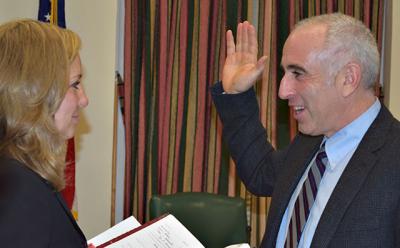District Sues to Keep Tower
District Sues to Keep Tower
The Springs Fire District is suing the East Hampton Town Zoning Board of Appeals, challenging its determination that town building inspectors acted incorrectly in allowing the construction of the district’s 150-foot tall communications tower.
The pole, which stands behind the Springs Firehouse, has already been equipped with devices that fire commissioners say will make it easier to reach first responders in an emergency, though the devices have not yet been activated.
The zoning board found, by a 4-1 decision, that the fire district must seek site plan approval from the town for the project.
Also named as defendants in the lawsuit are the office of the town clerk and the Building Department. The telecommunications company that erected the pole, Elite Towers, is co-plaintiff with the fire district.
The appeals board’s determination, written by its attorney, Elizabeth Baldwin, states that the fire commissioners failed to conduct a required “balancing of the public interest test,” and that the district, despite its status as a municipal entity, did not have “blanket immunity” from the permitting process.
“The Z.B.A. got it wrong,” Carl Irace, the district’s lawyer, said yesterday. Among other things, he questioned its use of the term “blanket immunity,” saying it was not legal parlance.
Further, Mr. Irace said that “when the town issued the building permit, it was saying ‘we are not going to review this anymore.’ They gave the ball back to the fire district,” he said, and no officials ever appeared at public hearings on the matter. “The town took deliberate steps to stay out of it, and the zoning board is attempting to reassert itself in, where the town chose not to tread.”
Both radio and cellphone communications have historically been poor in Springs, the suit says, with “large areas” having “minimal or no radio service, including numerous areas inside the Springs School District.” The tower, it says, is an attempt to rectify the situation.
The action was filed with the county clerk on Friday, after which the town was served. The town has until Feb. 16, when the two sides will meet in State Supreme Court in Riverhead, to respond to the suit.




